Korean Noodles
This post may contain affiliate links. See my disclosure policy.
My Korean noodles recipe features chewy udon noodles and tender veggies stir-fried in a sweet and spicy sauce. Ready in 10 minutes, these make the perfect main course or side dish!
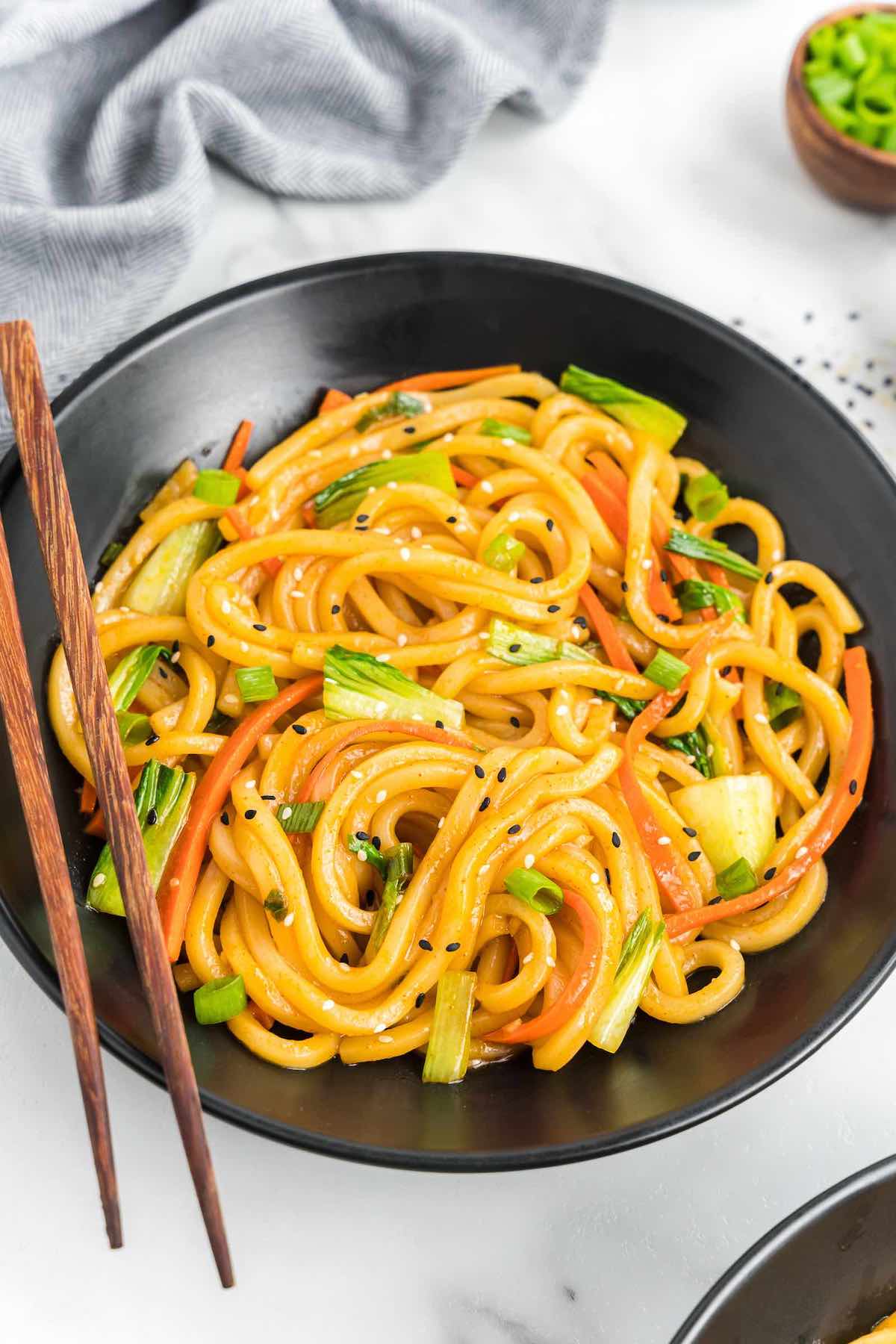
I love pasta almost as much as I love Asian food. Thankfully, it doesn’t have to be either or.
If you enjoyed my spicy noodles, you’ll love this Korean twist on them. With a similar spicy yet sweet flavor, I use a secret ingredient to seriously level up the flavor!
In culinary school, we were taught that the key to any noodle dish is balance – the sauce has to be spicy, a little sweet, and just salty enough to coat every strand. That lesson stuck with me, so I tested this recipe with ramen, soba, and even spaghetti (seriously!) to see how they held up. The winner? Thick udon noodles. Their chewiness soaks up the sauce perfectly without turning soggy.
My trick for the best flavor is whisking the gochujang with a touch of honey before adding it to the pan – it smooths out the spice and gives the sauce a glossy finish.
What are Korean spicy noodles?
Korean spicy noodles are made up of noodles and stir-fried vegetables mixed with a sweet and spicy sauce. A popular version, Samyang, can be made by adding hot water and seasoning to dried noodles. However, making them from scratch is just as easy–and the taste is far superior!
Table of Contents
Why I love this Korean noodles recipe
- They’re fast to make. Okay, maybe they’re not as fast as instant noodles, but making them from scratch is much tastier and only takes a few extra minutes.
- Easy to customize. Level up the spice tenfold, or bring it down to a kid-safe level.
- They make great leftovers. The flavors have time to mesh, and they reheat effortlessly in the microwave.
- Balanced flavor. Unlike some other recipes that lean too salty or too sweet, the mix of gochujang, soy, and honey hits the perfect spicy-sweet balance.
READER REVIEWS
★★★★★ – “Quick, flavorful, and just the right amount of heat. These noodles beat takeout!” – Maya
★★★★★ – “Loved how easy this was. The sauce clings perfectly to the udon – definitely making again.” – Chris
Key Ingredients
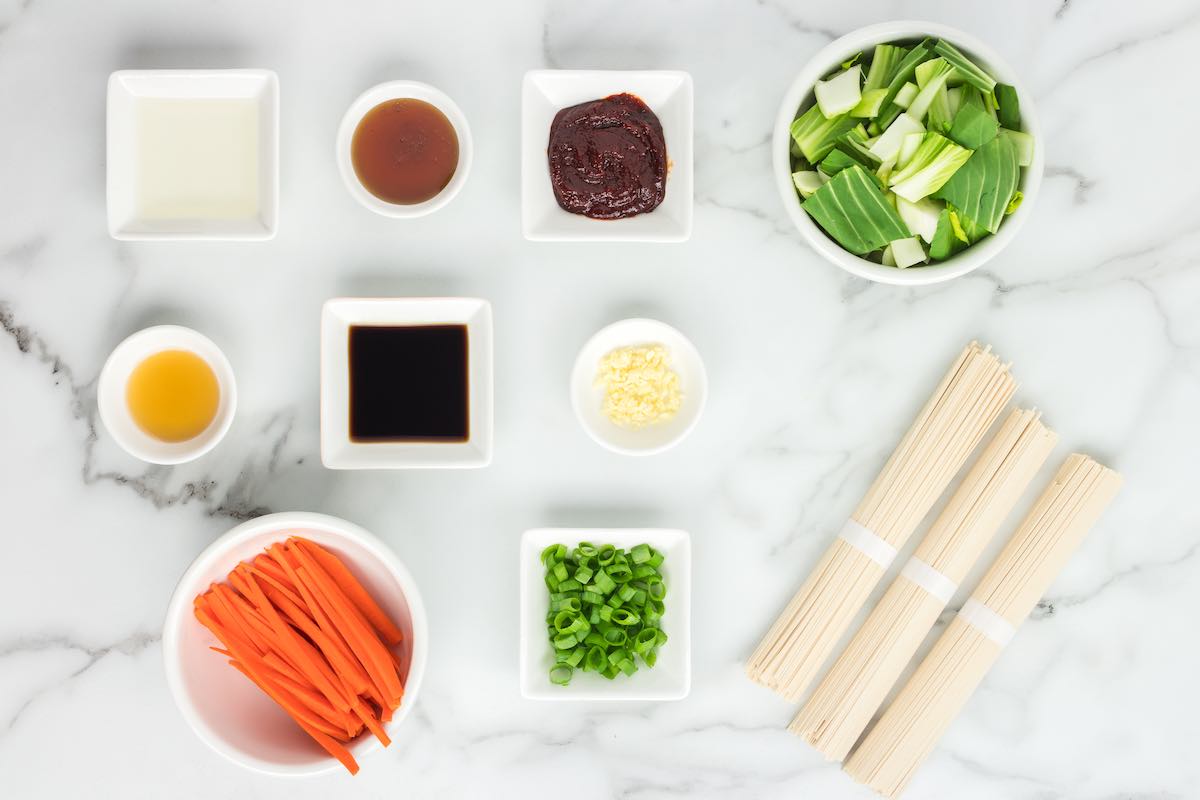
- Udon noodles. I like using thicker noodles for this dish, as they hold onto the sauce much better than thinner noodles. I usually find them in the Asian aisle of my grocery store.
- Stir fry veggies. I used thinly sliced carrots, baby bok choy, and green onions to add different textures and colors.
- Garlic. Preferably freshly minced garlic for aromatics.
- Vegetable oil. Or any neutral-flavored oil for frying.
For the Korean noodle sauce:
- Soy sauce. Essential for savoriness. After all, could you imagine an Asian sauce without soy sauce?
- Mirin. A type of rice wine with lower alcohol content and a sweeter flavor. This will add texture from the alcohol, acidity, and subtle sweetness. If you don’t have mirin, sub with rice vinegar and 1/2 teaspoon of sugar.
- Honey. My preferred sweetener for Asian sauces.
- Gochujang. A red chili paste is often used in Korean cooking. It is sweet, spicy, and savory. Look for it in the Asian aisle of your grocery store or at any Asian market.
- Sesame oil. Another essential ingredient.
Recipe variations
- Swap the noodles. If you don’t have udon noodles, try Japanese soba noodles or thick Chinese egg noodles. I’ve used both in a pinch, and they turned out great.
- Add protein. To make a heartier dish, add cooked chicken breast, beef, or sautéed shrimp. To keep it vegetarian, use air fryer tofu or top the noodles with an over easy egg.
- Switch up the veggies. I picked my favorite veggies, but you can use whatever you have on hand, like snow peas, mushrooms, bell peppers, or shredded cabbage.
- Level up the heat. Top the noodles with chili crunch of red pepper flakes.
- Make it creamy. Stir in a tablespoon of peanut butter or tahini to the sauce.
How to make Korean spicy noodles
I’ve included step-by-step photos below to make this recipe easy to follow at home. For the full printable recipe instructions and ingredient quantities, scroll to the recipe card at the bottom of this post.
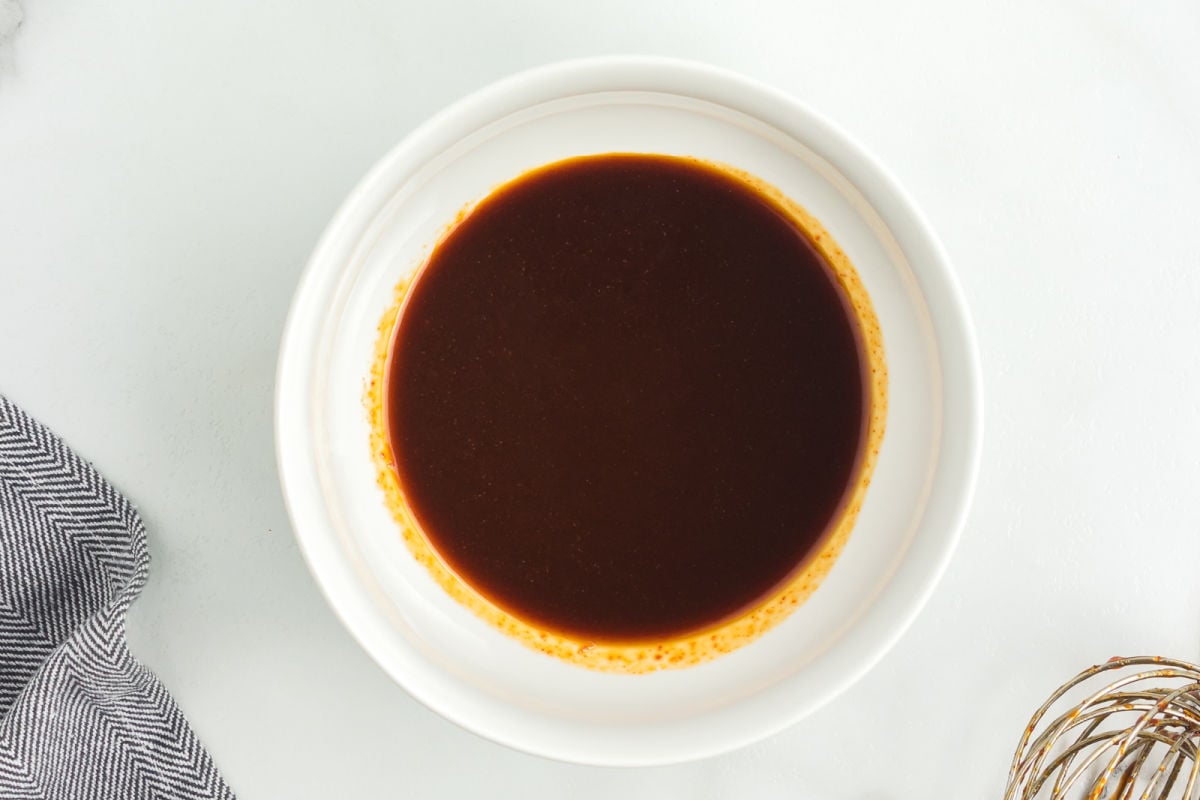
Step 1- Mix the sauce. In a small bowl, whisk together the sauce ingredients.
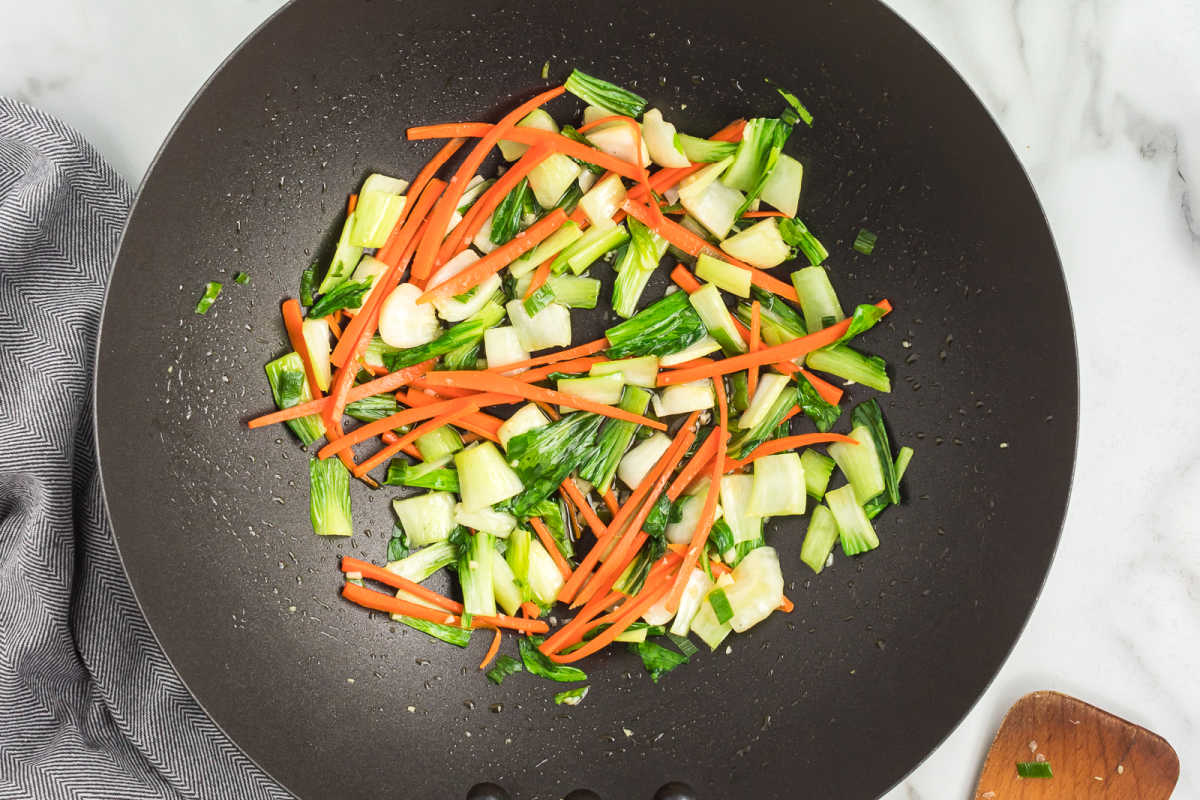
Step 2- Cook the vegetables. Heat the oil in a non-stick pan or wok over medium heat. Once hot, add the scallions and garlic and cook until fragrant. Add the carrots and bok choy and cook for 3-4 minutes.
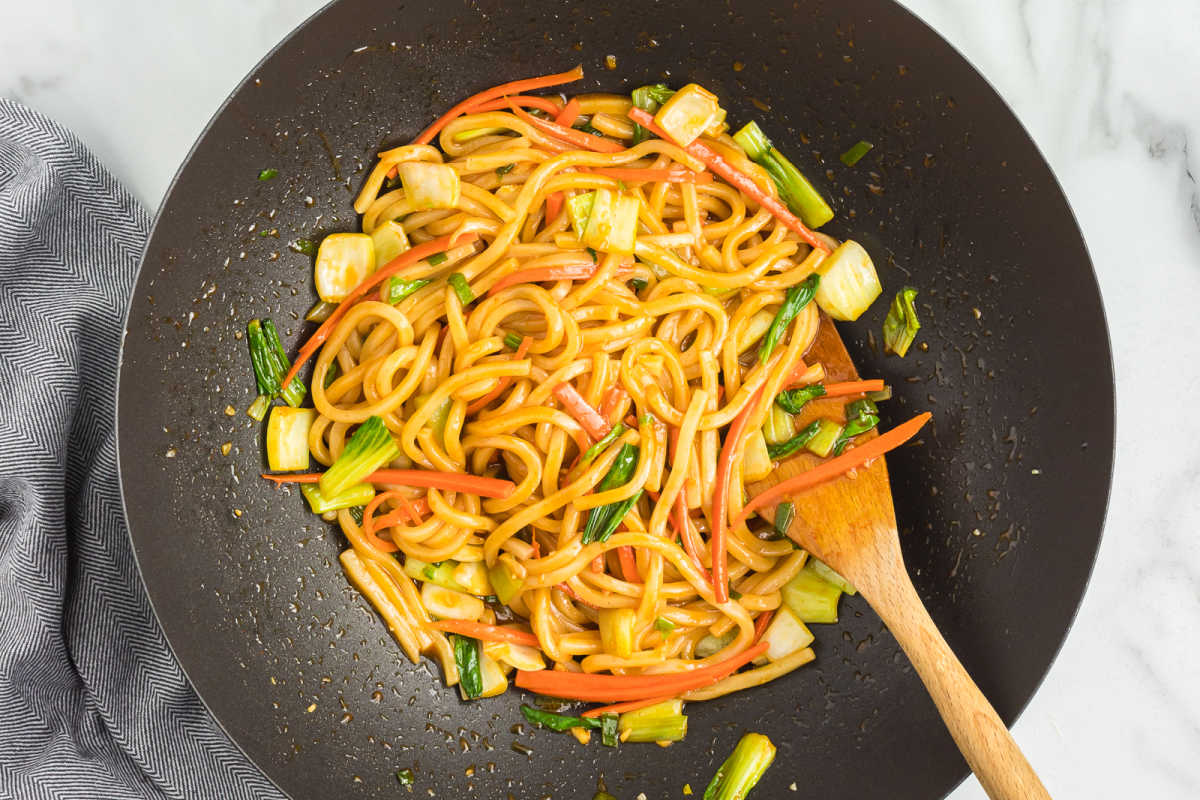
Step 3- Add cooked noodles and the sauce and cook for 1-2 minutes.

Step 4- Garnish and serve. Sprinkle with sesame seeds and serve immediately.
Arman’s recipe tips
- Thin out the sauce. If the sauce is too thick, add a splash of water until it reaches your desired consistency.
- Quickly stir fry the veggies. Stir-fried veggies should be slightly crunchy but not raw. Aim to only cook them for 3-4 minutes before adding the rest of the ingredients.
- Garnish the noodles with toasted sesame seeds and fresh lime juice.
Storage instructions
To store: Leftover gochujang noodles can be stored in an airtight container in the refrigerator for up to three days.
To freeze: Store cooled leftovers in a shallow container in the freezer for up to six months.
Reheating: Microwave noodles in 30-second intervals or reheat them on the stovetop over medium heat.
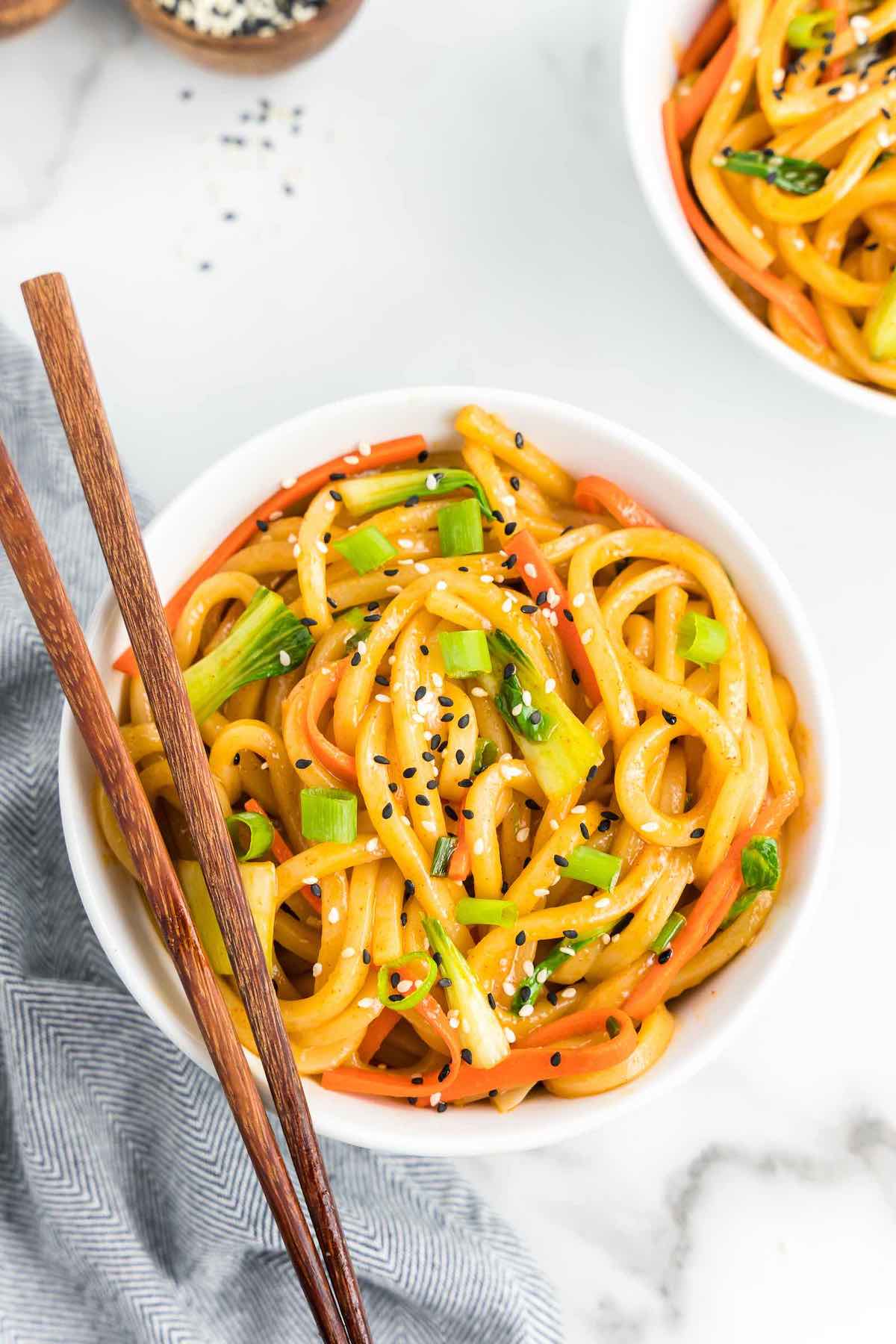
Frequently asked questions
Samyang is a popular Korean brand that makes different types of instant noodles, including very spicy ones. Samyang 3x Spicy noodles are high on the Scoville scale, measuring nearly 13,200 SHU (Scoville Heat Units). My homemade version is adjustable- you can double the gochujang for fiery heat, or halve it for a milder dish.
When made at home, yes. You control the sodium and sweetness, unlike packaged instant noodles. Each serving is under 300 calories with 10 grams of protein.
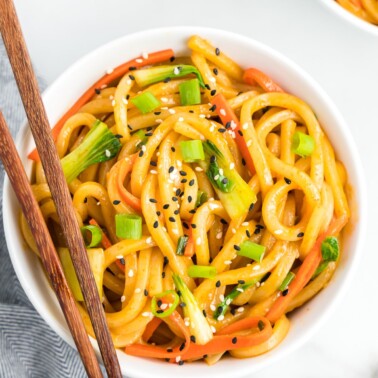
Korean Spicy Noodles
Ingredients
- 1 pound udon noodles cooked according to package instructions
- 2 tablespoons oil
- 4 green onions chopped
- 3 cloves garlic minced
- 1 small carrot thinly sliced
- 2 cups baby bok choy
For the Korean noodle sauce
- 2 tablespoons soy sauce
- 2 tablespoons mirin
- 1 tablespoon honey
- 2 tablespoons gochujang
- 1 teaspoon sesame oil
Instructions
- Start by making the sauce. Whisk together the soy sauce, mirin, honey, gochujang, and sesame oil, and setting it aside.
- In a non-stick skillet or wok, add the vegetable oil and place it over medium heat. Add the green onions and garlic and cook until fragrant.
- Add the carrot and bok choy and cook for 3-4 minutes. Add the cooked noodles and the sauce and mix everything together. Cook for 1-2 minutes, before removing from the heat.
Notes
- Love things saucy? Double the amount of sauce ingredients. The noodles will soak them up as they sit.
Nutrition
More of my favorite Asian dishes
- Peanut butter chicken
- Salt and pepper tofu
- Bok choy stir fry
- Chinese eggplant
- If it’s noodles you are afrer, try my spicy ramen, curry noodles, Pad See Ew, and birria ramen next.
Originally published November 2022














Hm I didnt know Koreans eat like this. You have some other recipes Korean?
Like I posted last night on your posting of this recipe, I made it today, and all I can say is “we loved it”. Living in a small town, I had to take some liberties with recipe. I had all of the sauce ingredients here at home. When I went to the local grocery store… no bok choy or Napa cabbage, so it was regular head cabbage, no udon, hence Rice linguini, the green onions looked terrible at the store, hence red onion. We like lots of vegetables (we have to watch our carbs as we are both diabetic)so in addition to the carrots. I added celery, green bell pepper, and mushrooms. I had on piece of Chicken Schnitzel leftover from last night’s meal, took the breading off, diced it and tossed it in. I have to say the simplicity of this dish is amazing and so tasty. I will definitely add this to my meal rotation.
I never tried Korea. Food before. I should give this a stry!